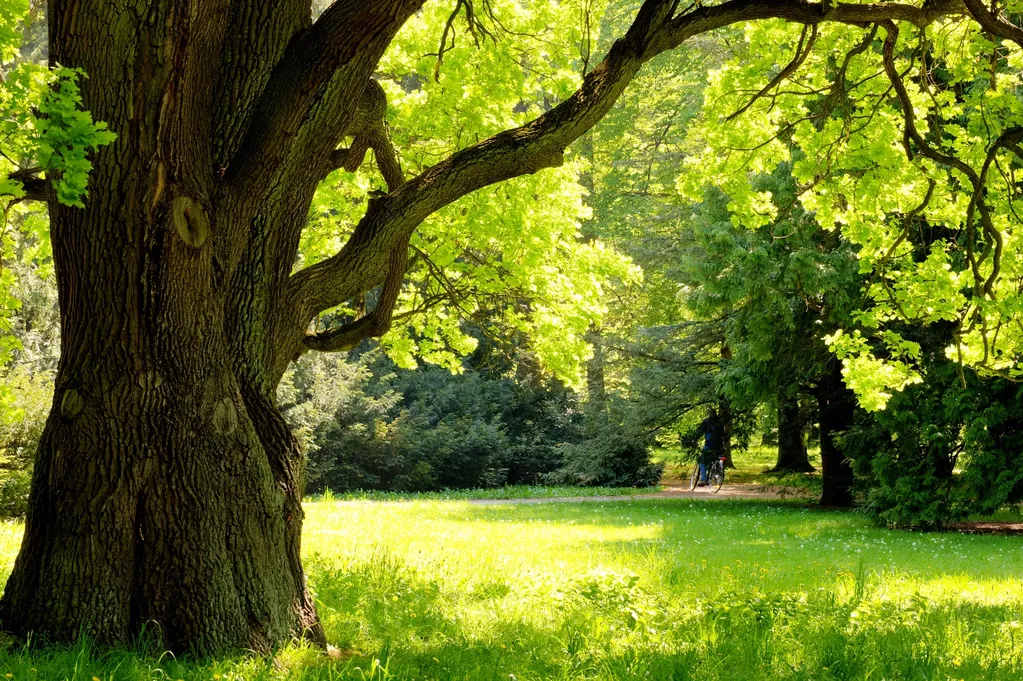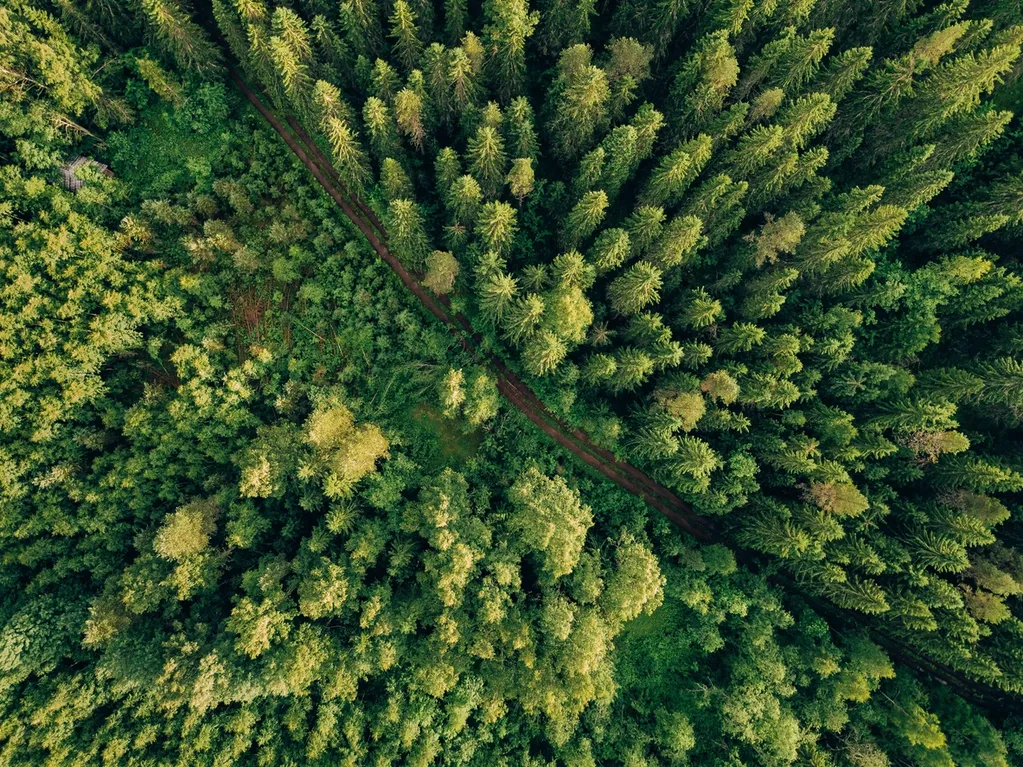So, you’re a new homeowner in Milford, excited to contribute to the village’s verdant canopy. Truthfully, these beautiful trees are complex under the surface. Yet, with the right prep time, understanding, and assistance, you can give them exactly what they need to succeed.
To help you get started, here are essential tree care tips for setting up your newly planted tree for healthy growth here in Milford, Michigan.

Make Pre-Planting Preparations
Proper planning is the first step to welcoming a new tree on your property.
Choose the right tree species that grows well in Milford, pick the perfect site in your yard, and plant it in the most ideal season.
To select a species that suits your property and preferences, here are factors to consider:
- TreeType: Different types of trees react to seasonal changes in different ways. Ask yourself if you prefer evergreens, deciduous, flowering, or fruit trees. You may also avoid overplanted species and use other native trees to maintain diversity.
- TreeSize: Will the mature tree’s expected height and width fit your yard aesthetic? Can it cause potential obstructions and hazards to nearby power lines and pipes?
- NutrientSources: Assess whether your tree can receive enough sunlight, moisture, and other nutrients. Will it also compete with plants that are too close to its position?
- Soil Type: Inspect the soil in your intended tree site. Choose a tree that thrives on it, whether it is wet, dry, or well-drained.
Once you’ve found the tree and the site that ticks all the boxes, you need to plant it at the ideal time.
When is The Best Time to Plant a New Tree?
New Milford trees are best planted in the late fall and early spring seasons.
Fall is most beneficial to trees like oaks due to the warm soil temperature and the dormancy of the upcoming winter, which reduces competition for water and nutrients.
For most other trees, the ideal planting season is in the spring—between April and May—especially if they stand on heavy loam or clay soils that are susceptible to frost.
Take advantage of the cool, cloudy days of the growing season when there’s enough moisture for your young tree.
However, to ensure the best conditions for planting your tree, we recommend consulting with an arborist in your area.
Dig and Plant Your Tree Right
When it’s time to plant trees, ensure the soil is evenly moist.
You can water it thoroughly in the days before the tree planting. Alternatively, wait for a good rainfall to do the job.
Dig a hole three times the nursery container’s width and about the same depth as the rootball. The root flare should be positioned just above ground level.
When digging, you can also “scarify” or loosen the soil on the sides of the hole to give the growing tree roots a better hold on the surrounding soil.
Don’t overwork the native soil, though, as this could cause compaction, erosion, or ruin the established microbial life and nutrients your new tree needs to survive.
Before placing your tree in the hole you’ve prepared, it’s essential to spend some time examining the root flare of your tree.
The root flare is the zone of rapid taper from the trunk to the central buttress roots.
Often, trees come from the nursery with 1-3 inches of soil covering the root flare; in most cases, you must remove this excess soil.
Exposing this zone not only helps with planting your tree at a proper depth but also discourages the tree from experiencing long-term root girdling issues.
Remove the container, hold it by the rootball, and place it into the hole making sure to plant the tree 1-2 inches above the soil level.
Refill the sides with soil and press firmly, but don’t put too much pressure on them to avoid soil compaction.
Observe Proper Watering
You should always keep up with your tree’s water needs, but too much water or too little can be deadly for a growing sapling.
Water the base of the tree as far as the tree’s rootball goes with gallons twice or three times every inch of the trunk diameter.
For example, a tree with a 3-inch trunk diameter needs 6 to 9 gallons of water.
Follow these guidelines to make sure that you’re giving your tree enough water:
- Water daily for the first two weeks
- Reduce the frequency to every 2 to 3 days for the following weeks
- After the 12th week, water weekly until the roots have been established
- Adjust the amount of water during the hot and dry seasons
To effectively moisten the soil, you want to deliver water slowly over an extended period of time, using a drip irrigation system or soaker hose.
This is a good place to start watering your tree, but the type of soil and weather conditions will require you to be flexible when tending to its water needs.
Mulch & Stakes Can Support Your Tree
You can further support the growth of your newly planted tree with mulch.
Add an even layer of organic mulch 3 inches thick over the soil.
Have it circle the tree trunk with a 3 to 4-inch gap from the base of your tree. Spread it out as far as the canopy grows.
The mulch’s organic matter will provide nutrients to the sapling while locking in the soil’s moisture and temperature.
Another way to assist your tree’s early growth is to brace it with stakes. It will help keep your tree upright when strong winds blow.
A fence may also be beneficial if it’s in the usual path of your lawnmower.
Commit to Regular Inspection & Maintenance
From now on, taking care of your tree also means paying close attention to its growth and sustaining its needs accordingly.
Learn the warning signs of failing tree health and the spread of diseases on trees so you can address these issues immediately.
Pruning is a common remedy and preventive measure. Dead and diseased branches are removed to promote better long-term health.

Pruning a young tree can be beneficial to promote proper long-term structure.
Young trees often grow more vigorously and respond to stressors more aggressively.
At Ascension Tree Care, young tree training is usually employed to promote a single dominant leader.
This training can set a tree up for a successful future, extending its lifetime while limiting the amount of pruning when the tree is more mature and less vigorous and responsive.
Professionals best do tree assessments and maintenance routines such as pruning with a deep understanding of tree physiology.
Otherwise, one mistake can harm your tree and may be too hard to correct.
Can You Use Fertilizers on Newly-Planted Trees?
Fertilizers positively affect trees, but giving them too early can do the opposite.
When your tree has not settled yet, and you increase its nutrient uptake, it could experience a transplant shock. This stresses the sapling and may result in a health decline.
To avoid this, do not give them fertilizers within the first 2 years since they’ve been planted on your property.
After this initial period, if your tree’s growth is slower than expected, your local arborist may suggest using slow-release fertilizers to resolve the soil’s nutrient deficiency.
Ascend Your Tree’s Potential With Professional Tree Care
A new property free of trees is still a blank canvas waiting to flourish.
Ascension Tree Care, a professional tree care service company serving Oakland County, Michigan, can help you cultivate that lawn masterpiece you have always envisioned.
Our ISA-certified arborists offer expert consultations, tree assessments, and maintenance services to help you quickly navigate the complexities of tree care.
With our arboricultural expertise, years of experience, and reputation for honesty in every service we provide, you can rest assured that healthy, safe, and aesthetically appealing trees will soon grow and adorn your home.
